Bang Pa-In Palace
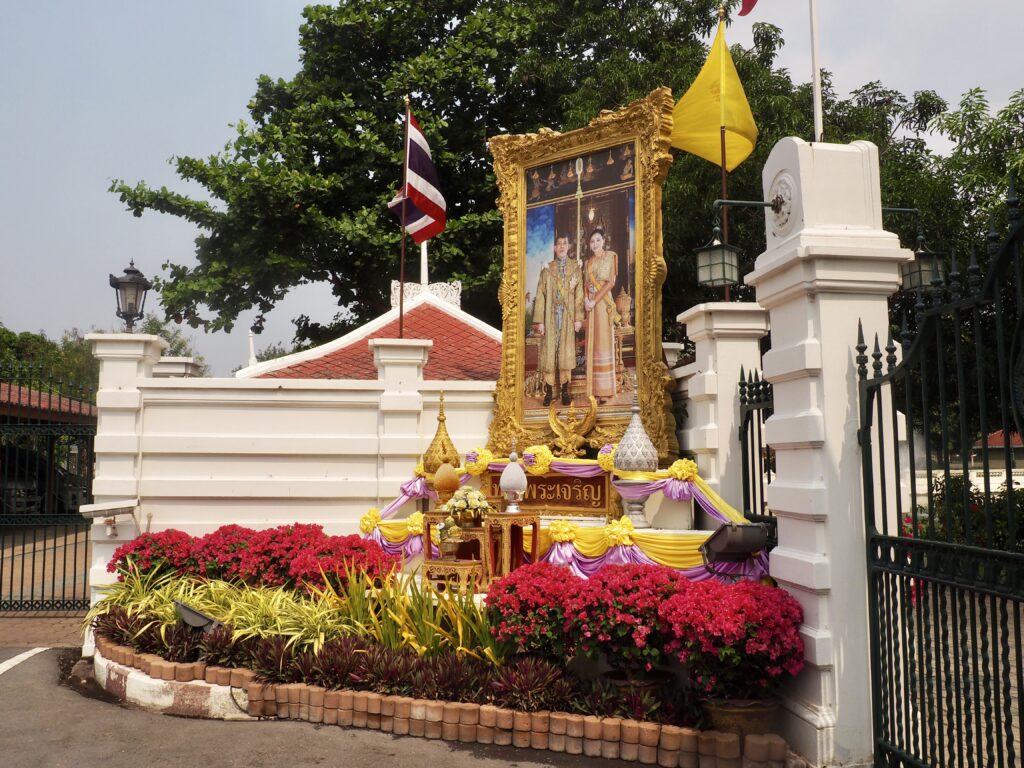
Royal residences on Bang Pa-In island go back to the Ayutthaya era when King Prasat Thong had a palace built in the 17th century, now long since destroyed. It was Rama IV who returned and constructed the first temporary residence in the 19th century. It wasn’t until the 1870s and 1880s that most of the current buildings were erected. Today the palace is used only occasionally as a residence and for receptions.
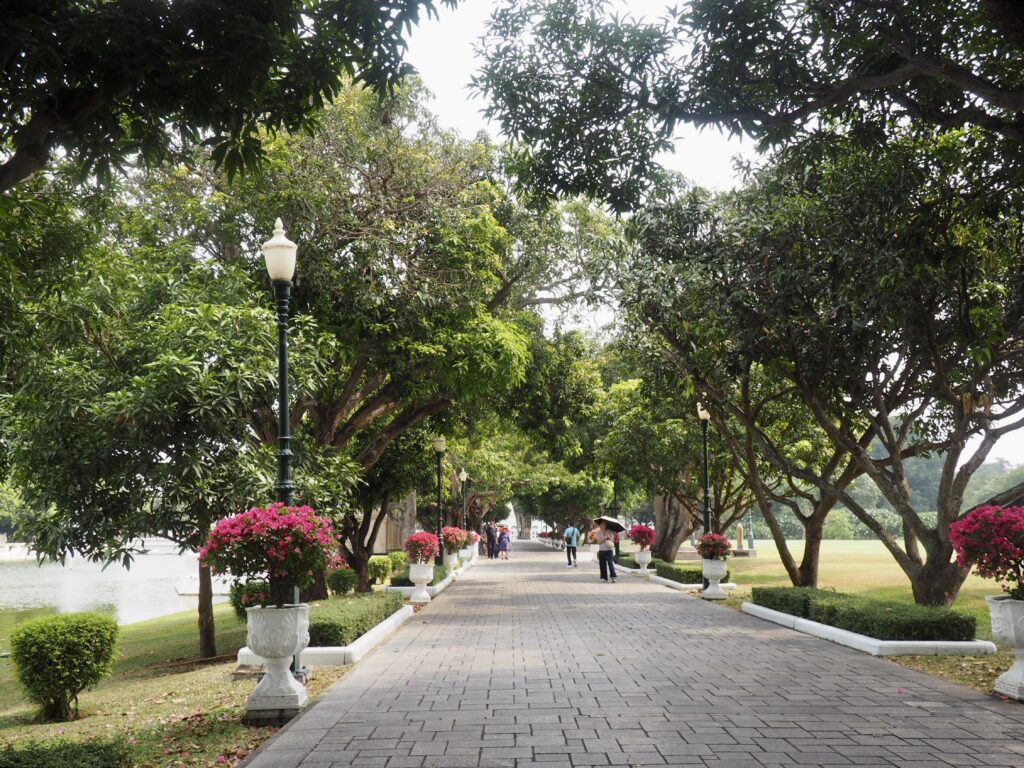
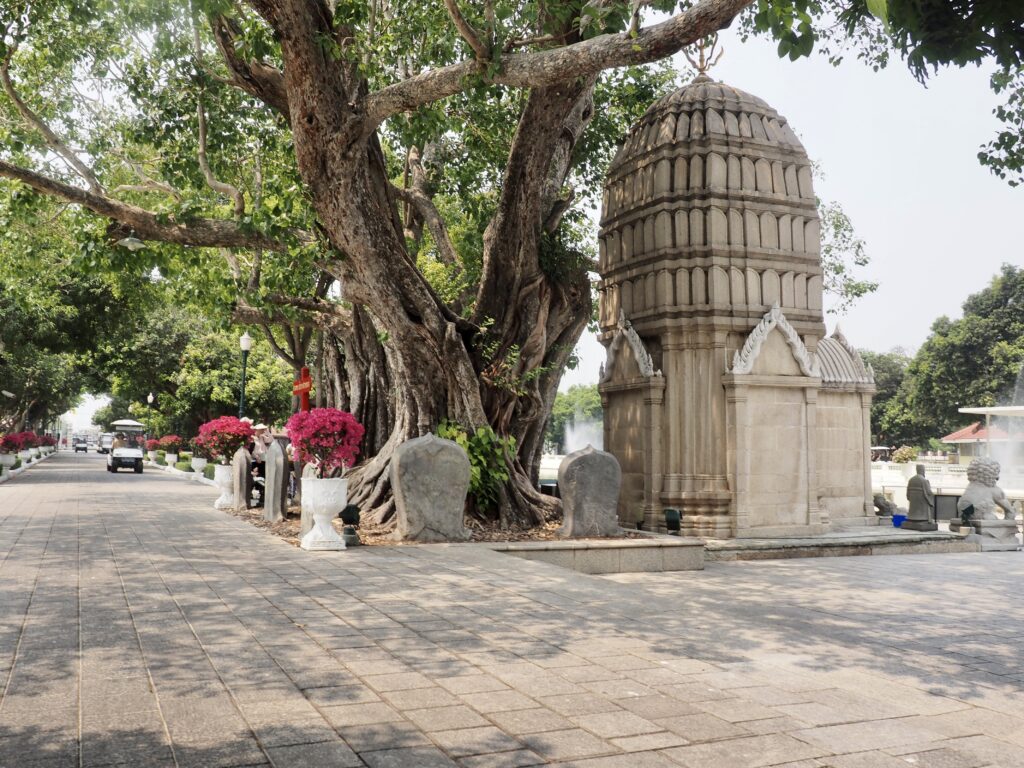
In 1880 Rama V dedicated this small Khmer-style shrine to King Prasat Thong, whose name literally means King of the Golden Palace because a miniature golden palace was discovered during his reign. The tree is from a cutting from the sacred Bodhi tree and is protected by eight boundary stones (“sema” or “sima”) that ordinarily surround a bot (ordination hall) within a temple.
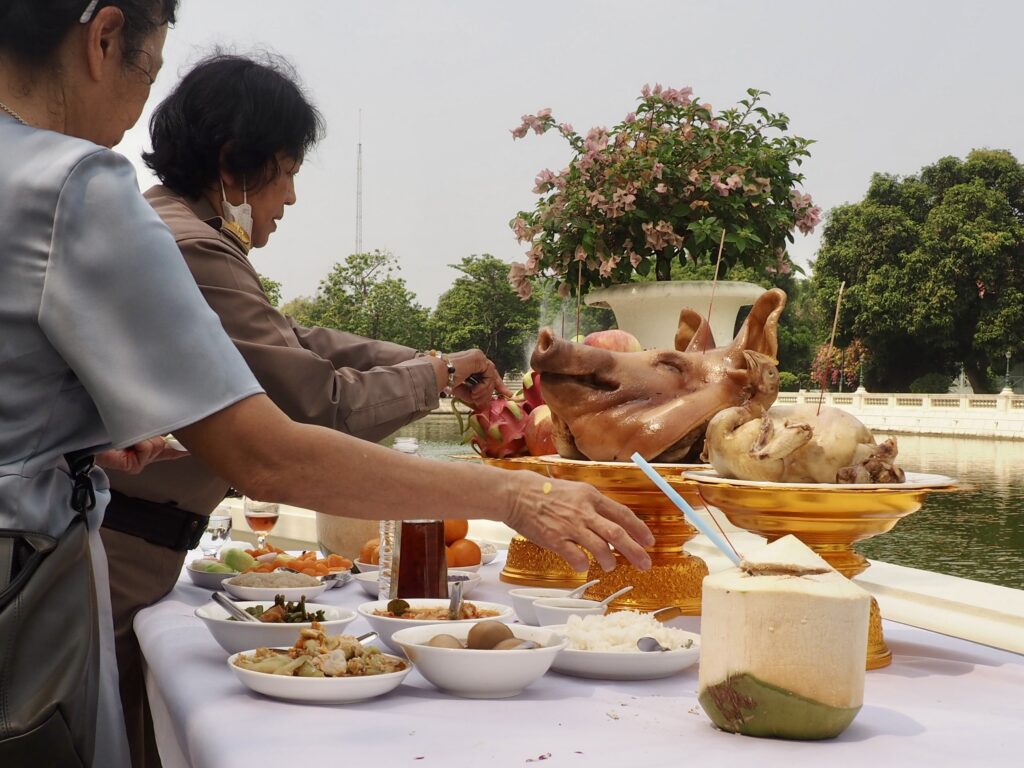
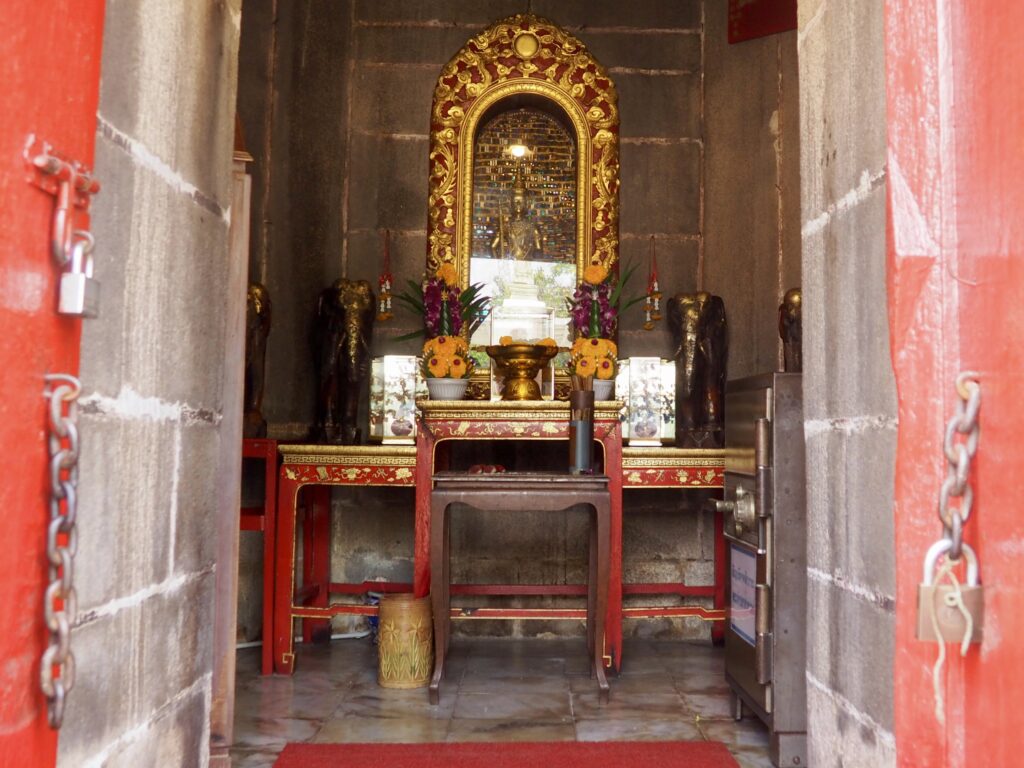
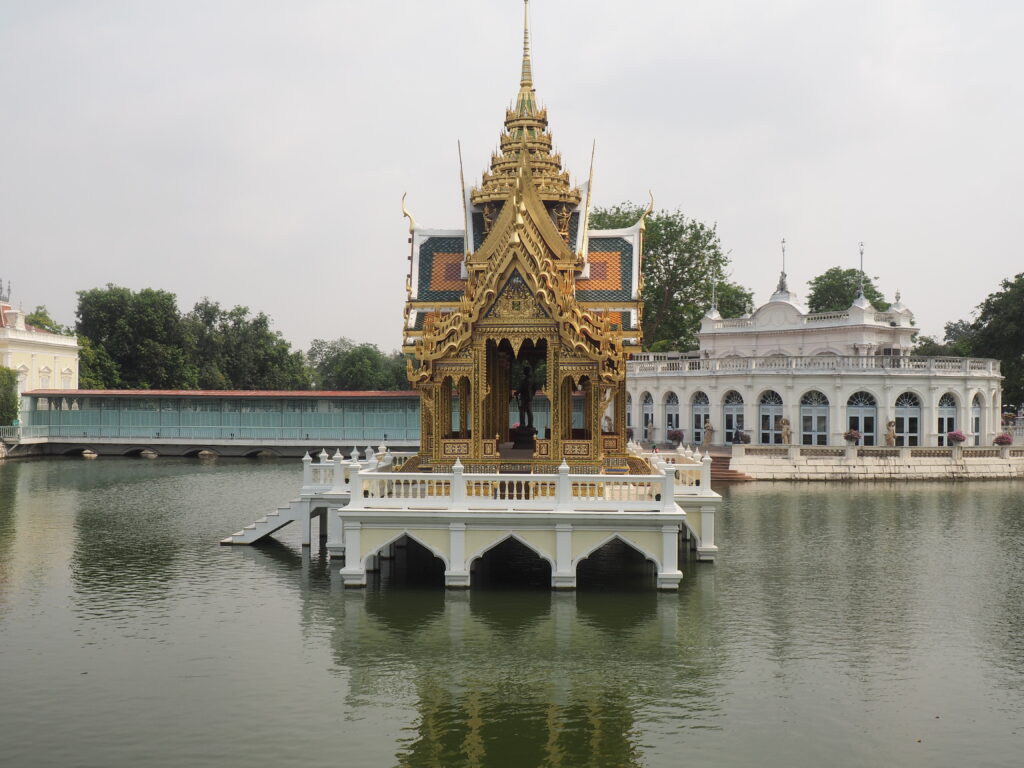
In 1876 Rama V built this copy of a pavilion in the Grand Palace that was used for changing regalia prior to mounting a palanquin (you know, the big box you sit in while a bunch of men carry it around on poles). A statue of the King now stands in its center. The covered bridge with louvered walls behind it to the left connected the semicircular building (a gate for the King’s use, now used for exhibitions) to the Royal Residence (part of the Inner Palace). The ladies of the Court could look out from the bridge without being observed by those in the Outer Palace grounds (the public area accessible to people who were not part of the royal household).

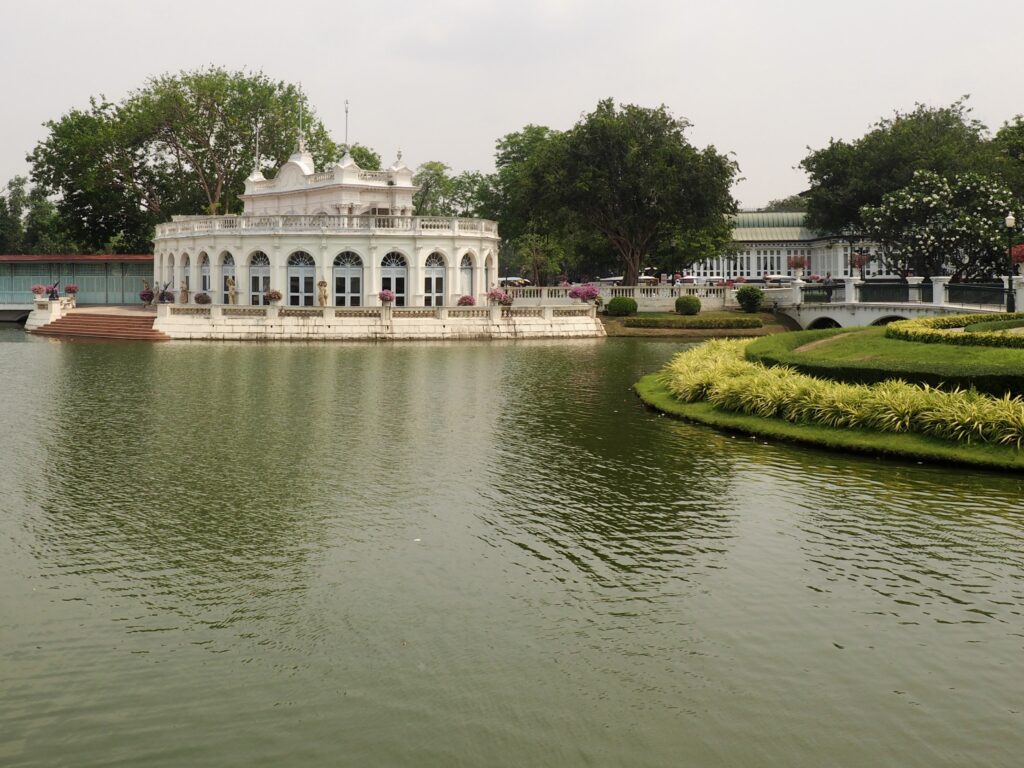
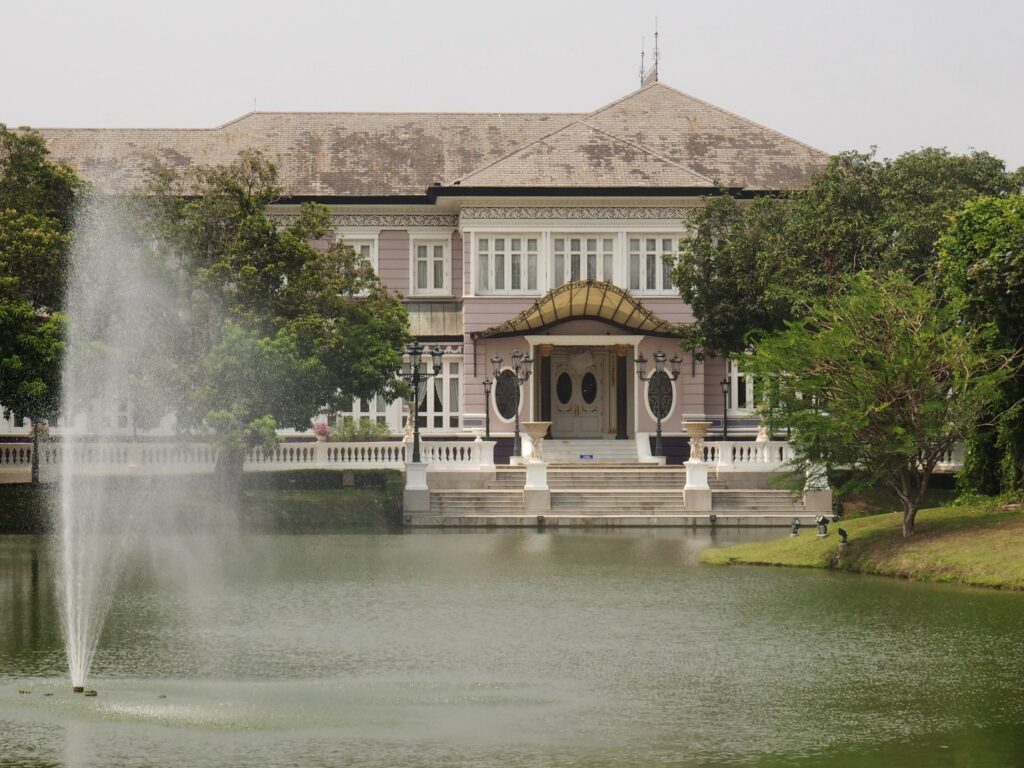
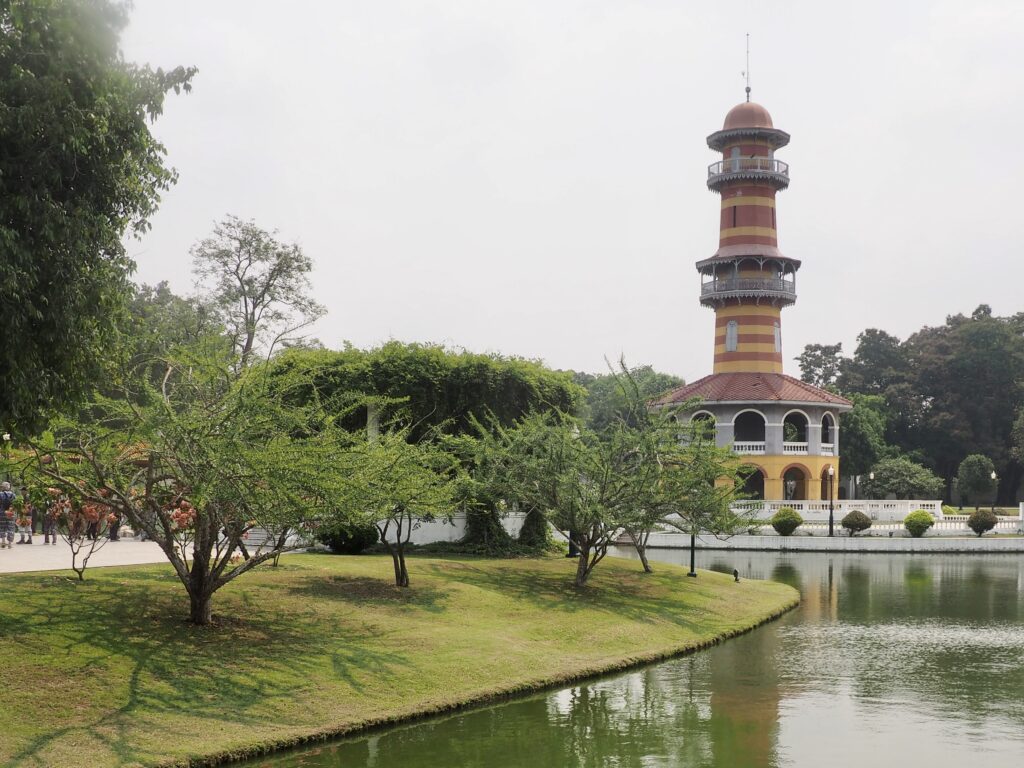





A favorite residence of Rama VI, the Chinese gifted this residence to Rama V. It possessed the first elevator in Thailand. Alas, it would have been nice to be able to go inside the various residences, but walking the grounds of the Summer Palace(s) did reveal once again the beauty that can be created with absolute power and unlimited resources. 😉
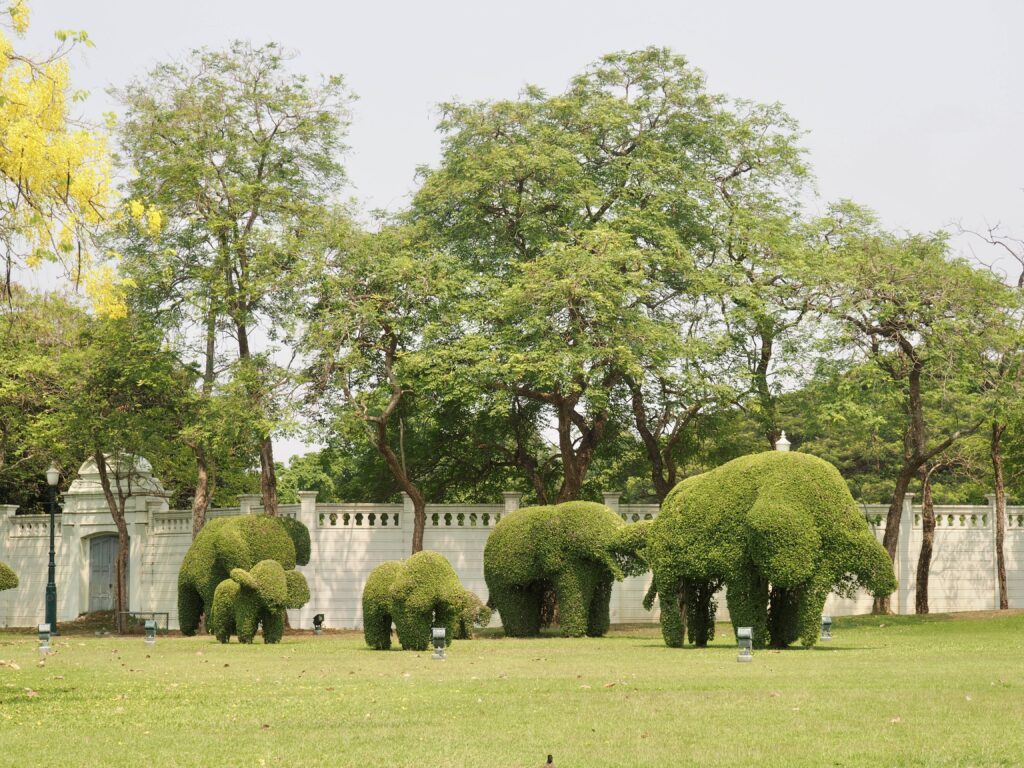


Ayutthaya

As is often the case, Ayutthaya the 14th century Siamese capital, sacked in the 18th century, is now wrapped around and through by 21st century Ayutthaya. It lies at the confluence of three rivers, including the Chao Phraya. There are ruins everywhere, temples everywhere, Buddha statues everywhere. We saw ruins, but not so much the better preserved bits around the city, such as a Catholic Church that survived the sack. The capital was named for Ayodhya, a fictional kingdom in the Ramakien, the Thai Ramayana.
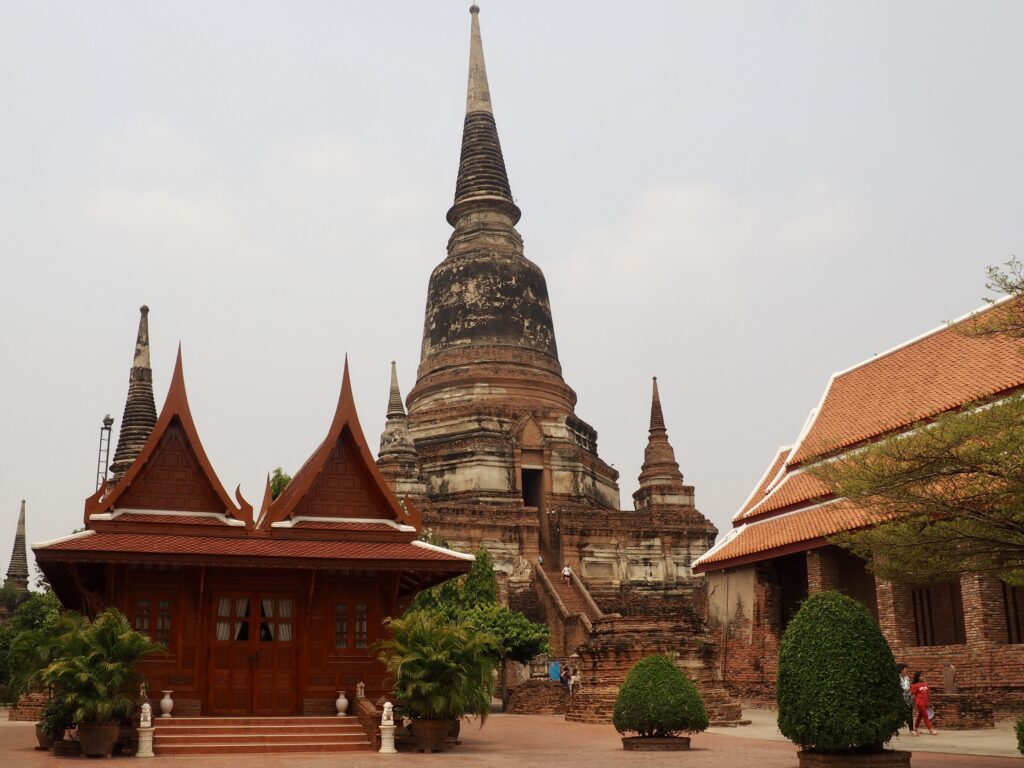


The wihan or shrine hall of Wat Lokaya Sutharam housing this 140’ long Buddha was destroyed by the Burmese only leaving some brick pillars. The Buddha image represents his increasing his size 100 fold to confront the demon Rahu.




People can “make merit” by purchasing the cloth and draping the Buddhas.

All of these Buddhas have the same hand gesture of Calling the Earth to Witness. Depictions of the Buddha do feature different hand gestures having different meanings. This gesture refers to his coming to enlightenment and overcoming the temptations set forth by the demon Mara.

















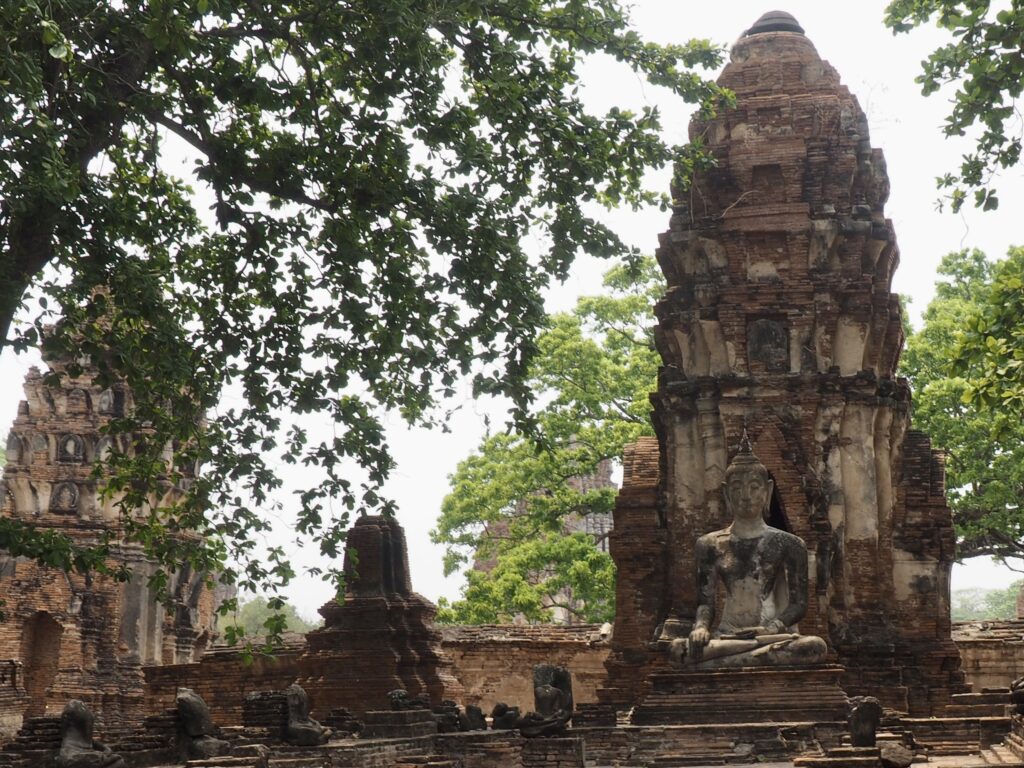
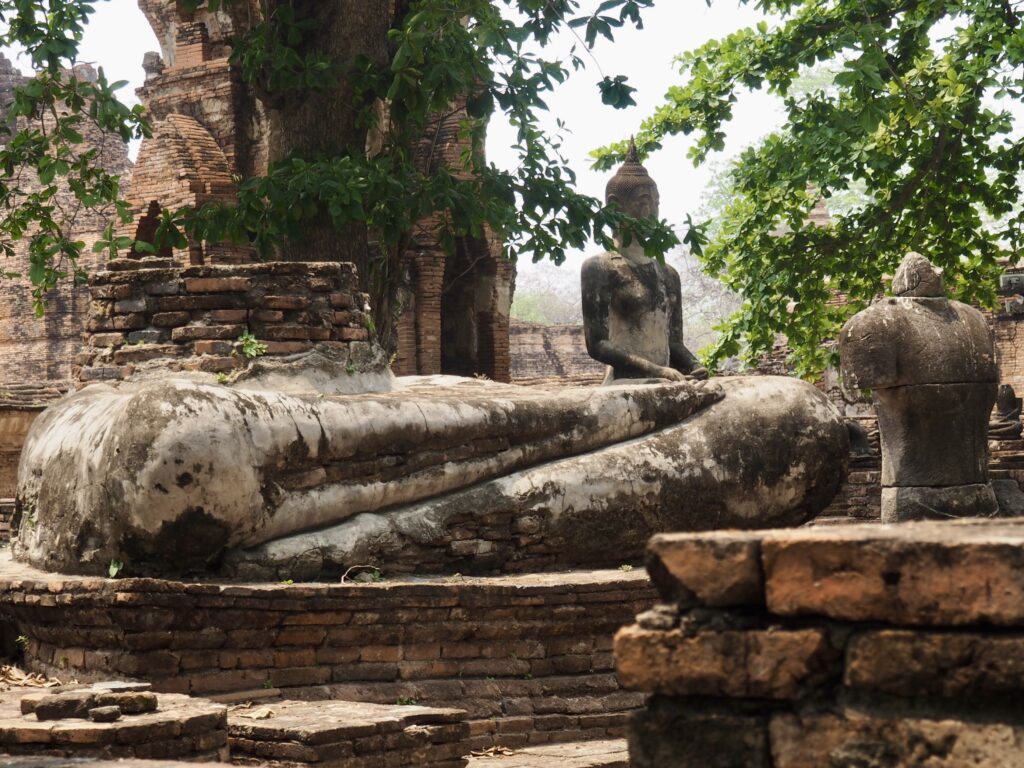
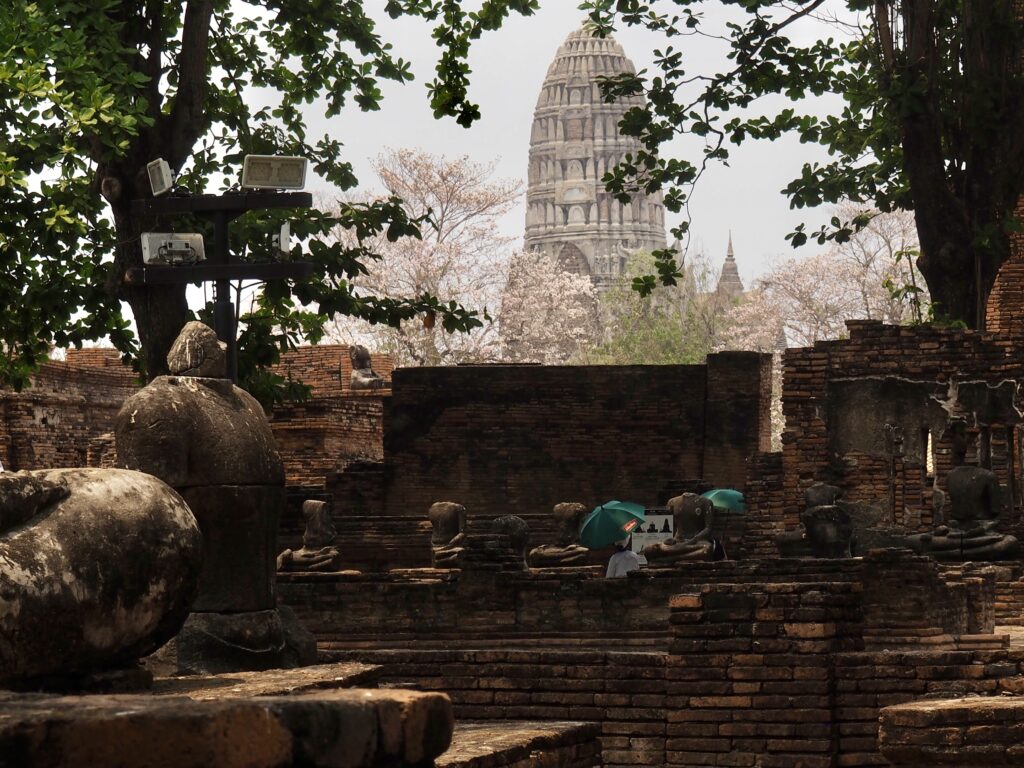
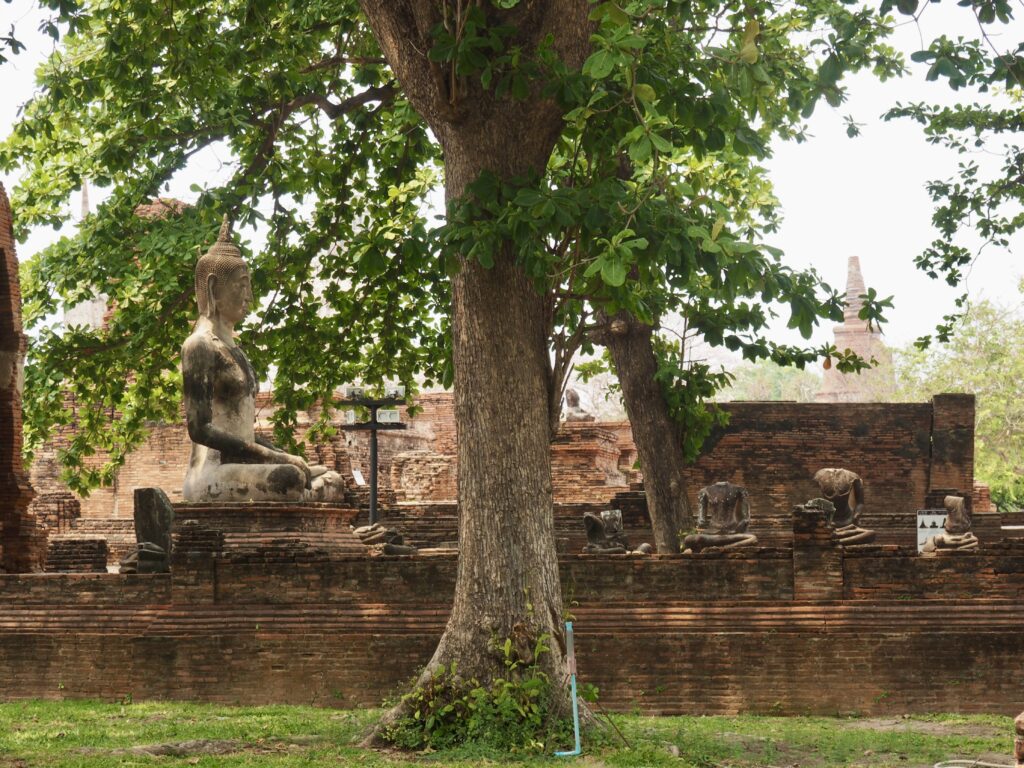
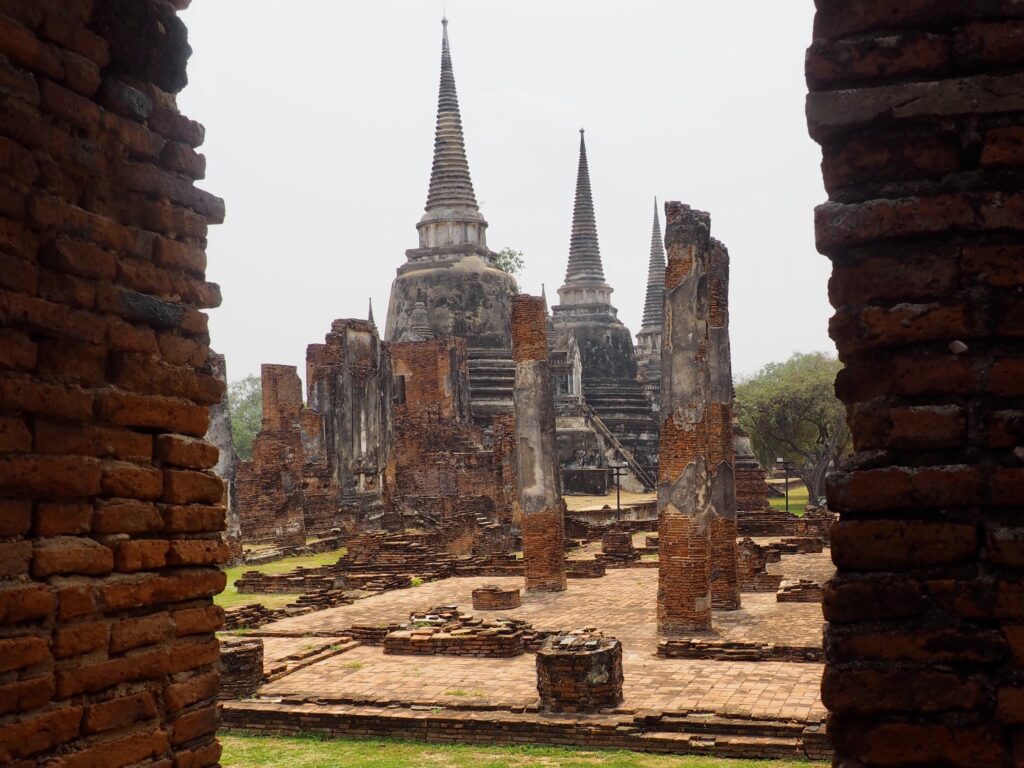


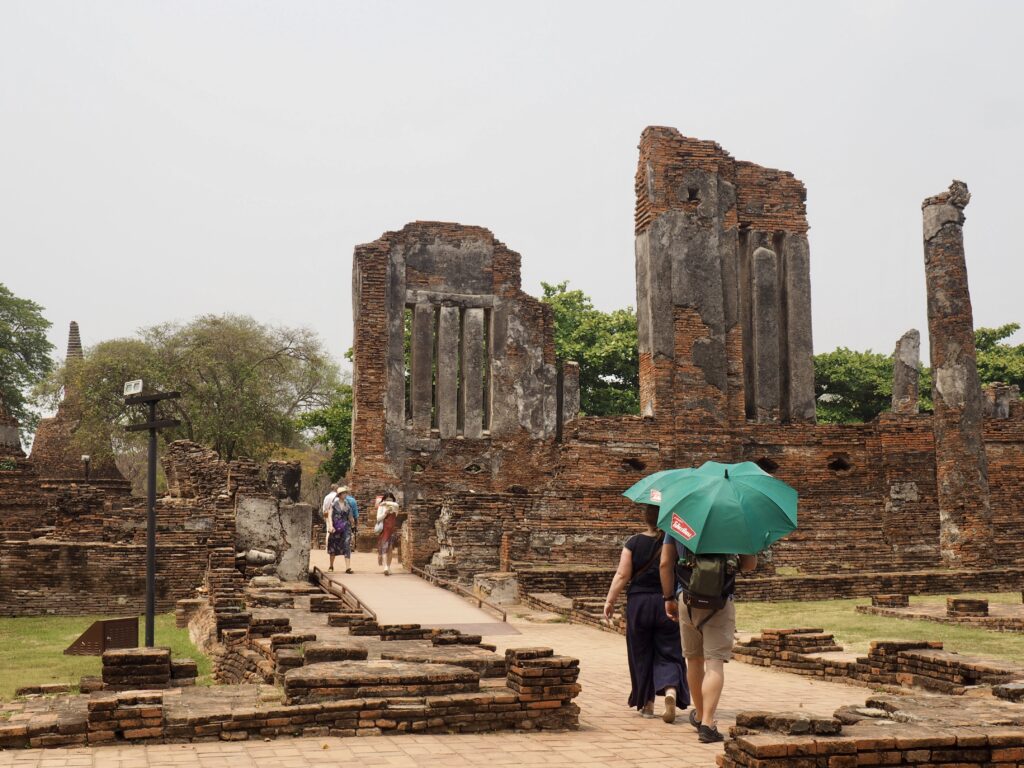


The Buddha head may have been separated from the body by the Burmese or by later thieves, no one knows for sure. But, what is remarkable is that it has been embraced (seemingly protected) by the Bodhi tree in an upright position. As with all Buddha figures, it is treated with respect and has become an iconic image for the country.


